The 10 Properties of Quantum Machine Learning
Dr. Amit Ray, Compassionate AI Lab
In this article, we discussed the 10 properties and characteristics of hybrid classical-quantum machine learning approaches for our Compassionate AI Lab projects. Quantum computers with the power of machine learning will disrupt every industry. They will change the way we live in this world and the way we fight diseases, care for old people and blind people, invent new medicines and new materials, and solve health, climate and social issues. Similar to the 10 V’s of big data we have identified 10 M’s of quantum machine learning (QML). These 10 properties of quantum machine learning can be argued, debated and fine tuned for further refinements.
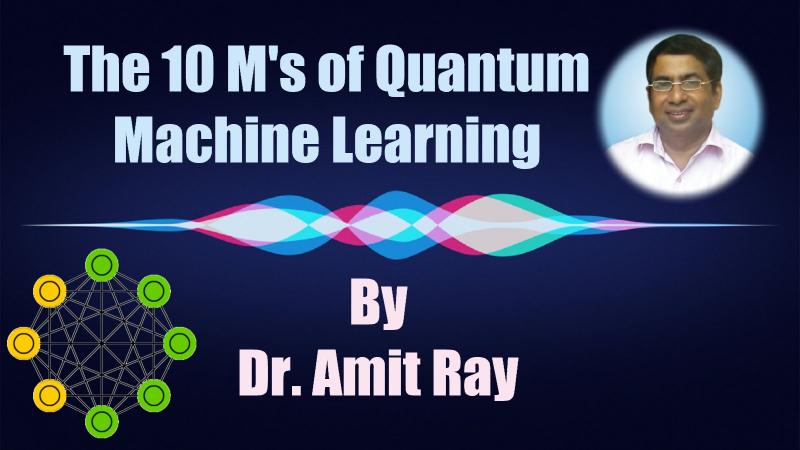
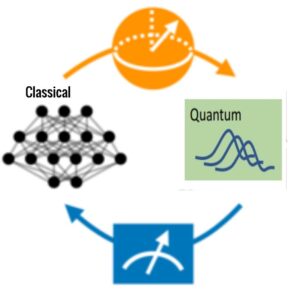
Hybrid Classical Quantum Machine Learning
The compassionate AI lab is currently developing a hybrid classical-quantum machine learning (HQML) framework – a quantum computing virtual plugin to build a bridge between the available quantum computing facilities with the classical machine learning software like Tensor flow, Scikit-learn, Keras, XGBoost, LightGBM, and cuDNN.
Presently the hybrid classical-quantum machine learning (HQML) framework includes the quantum learning algorithms like: Quantum Neural Networks, Quantum Boltzmann Machine, Quantum Principal Component Analysis, Quantum k-means algorithm, Quantum k-medians algorithm, Quantum Bayesian Networks and Quantum Support Vector Machines.
The field of hybrid classical-quantum machine learning has been maturing rapidly with the availability of the prototype universal gate-model quantum processors of IBM, Google, and Rigetti as well as more sophisticated quantum annealers of D-Wave systems. Moreover, the availability of various high-performance computing (HPC) simulation of quantum circuits facilities improving the possibilities of exploring the power of QML in various application areas. Quantum hardware dedicated to machine learning are also becoming reality. They too can provide much faster processing power than a general-purpose quantum computer.
The heart of quantum machine learning (QML) is the quantum mechanical properties like superposition, interference, tunneling, entanglement, measurement, coherence and many-body localization. Theoretically sub-atomic particles can be located in a potentially unlimited number of places at once, and to behave in a potentially unlimited number of different ways. Quantum computer promises to take advantage of a sub-atomic particles ability to be in a superposition of states to produce prodigiously increased power and speed of calculations.
Interference is the mechanism by which a hypothetical quantum computer would combine its multiple calculations into one answer. With the advent of the uncertainty principle, particles could no longer be said to have separate, well-defined positions and velocities, but only a quantum state, a combination of position and velocity.

Schrodinger equation
Schrodinger equation, is the cornerstone of quantum mechanics in describing how quantum states evolve. Schrodinger equation also supports the idea of superposition – particles exist in a “probability cloud” sate. Max Born, interpret the wave as the probability. It is proportional to the square of the probability amplitude of the wave function. Given a wave function ψ, the probability density function p(x,y,z) for a measurement of the position at time t0 will be given by p(x,y,z) = |ψ(x,y,z,t0)|2. Born’s rule connects quantum theory to experiments and measurements.
Any attempt to measure or obtain knowledge of quantum superposition by the outside world, the wave-function will collapse. Measurement causes them to decoherence, effectively destroying the superposition and reducing it to a single location or state, and also destroying the ability of its individual states to interfere with each other. Decoherence, results in the collapse of the quantum wave function and the settling of a particle into its observed state under classical physics.
Quantum entanglement is the basis of the quantum parallelism. If you perform an operation on one element of the entangled pair, it will automatically impact the other one. Nonlocality occurs due to the phenomenon of entanglement, whereby particles that interact with each other become permanently correlated, or dependent on each other’s states and properties, to the extent that they effectively lose their individuality and in many ways behave as a single entity. Through cluster qubits and entanglement swapping techniques individual ions, the carriers of the qubits are deterministically entangled and separated.
Quantum Artificial Intelligence Modules

Primarily, there are two types of quantum processing: 1) Gate model universal quantum processing and 2) Quantum Annealing processing. Both of them have their own advantages and limitations. Quantum machine learning can be implemented on both of them. HHL algorithm, quantum Fourier transform algorithm, variational quantum eigensolvers, quantum minimization algorithm, quantum phase estimation, quantum walk and Grover’s search algorithms are the key technologies for quantum machine learning.
Machine learning (ML) is dynamic and does not require human intervention to make certain changes. Machine learning programs, in a sense, adjust themselves in response to the data they’re exposed to. The “learning” part of machine learning means that ML algorithms attempt to optimize some objective functions along a certain dimension. They usually try to minimize error or maximize the likelihood of their predictions being true.
In a simplistic way a machine learning is just solving multivariate optimization problems. Hence, theoretically quantum annealing and adiabatic quantum computing is most suitable for that. However, human intelligence is much more than that. We have classified quantum artificial intelligence in four groups: shallow quantum intelligence, deep quantum intelligence and quantum creative or abstract intelligence. Shallow quantum intelligence primarily focused on traditional machine learning techniques like: supervised learning, unsupervised learning and reinforcement learning. The deep quantum intelligence modules focused on multi-agent, multi-domain intelligence, explanation engine and symbolic intelligence. Our quantum abstract intelligence focuses on mimicking the out of the box thinking and creative aspects of human intelligence.
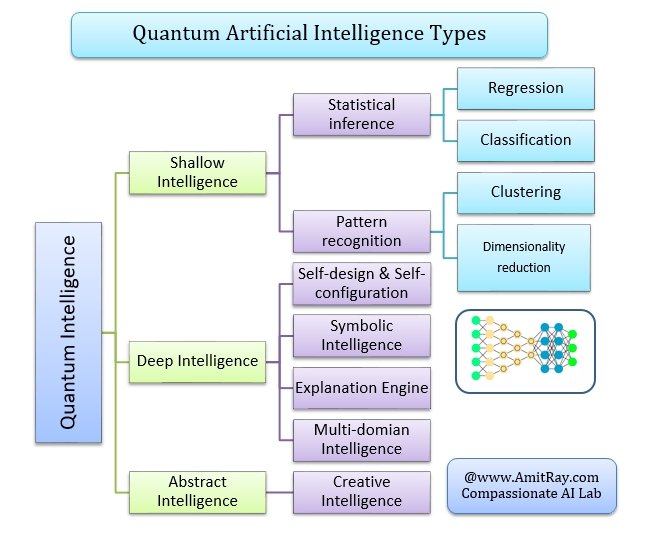
Types of Quantum Artificial Intelligence Techniques
10 Properties of Quantum Machine Learning
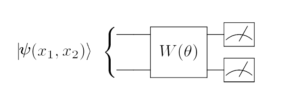 Here, we identified the ten key properties of QML. The first four properties are called primary properties and the next six properties are secondary in nature. It balances all the three forms of quantum artificial intelligence: shallow quantum intelligence, deep quantum intelligence, and creative intelligence. You need to know these 10 characteristics and properties of quantum machine learning to prepare for both the challenges and advantages of quantum machine learning initiatives.
Here, we identified the ten key properties of QML. The first four properties are called primary properties and the next six properties are secondary in nature. It balances all the three forms of quantum artificial intelligence: shallow quantum intelligence, deep quantum intelligence, and creative intelligence. You need to know these 10 characteristics and properties of quantum machine learning to prepare for both the challenges and advantages of quantum machine learning initiatives.

The 10 M’s of Quantum Machine Learning
1 Majestic

4 Dimensions of Machine Learning
Majestic includes four key dimensions of QML – intelligence, speed, complexity and data volume. This covers the ability of QML to eat, drink and digest all aspects of big data. It is the ability to deal with high volume, high complexity big data at high speed. The quantum computer exhibits a square root speed up over the classical computer. For example, quantum computers can search an unsorted database with N entries in time proportional to √N—that is O(√N)—where a classical computer given black-box access to the same database takes time proportional to N – that is O(N). Similarly, quantum associative memory algorithm (QAM) uses the exponential storage capacity of memory states, which can process big data.
QML based systems should be not only intelligent but must be noble in some way.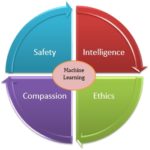 QML should be able to draw conclusion from subjective knowledge and from fuzzy incomplete information. QML should have the ability to adapt first. Intelligence is what system can improve by reasoning and learning from data. While meritorious is intelligence plus some wisdom. Human safety, ethics, and compassion by design should be part of the quantum machine learning frame work.
QML should be able to draw conclusion from subjective knowledge and from fuzzy incomplete information. QML should have the ability to adapt first. Intelligence is what system can improve by reasoning and learning from data. While meritorious is intelligence plus some wisdom. Human safety, ethics, and compassion by design should be part of the quantum machine learning frame work.
3. Merger
Large-scale machine learning applications like multi-omics-data integration, witnessing the dramatic growth of heterogeneous data, software and complexity. Often data consists of a complex set of cross-media content, such as text, images, videos, audio, graphics, time series sequences, and so on. Merging and integrating these hybrid data comes from multiple sources are challenging. Moreover, quantum programs are inherently probabilistic and requires a fundamentally different approach to programming. Effective algorithms and generalized frameworks are key requirement to meet heterogeneous requirements. Ability to integrate, merge and handle all forms of heterogeneous data types, heterogeneous software platforms, heterogeneous algorithms and heterogeneous hardware facilities in hybrid system is a key challenge.
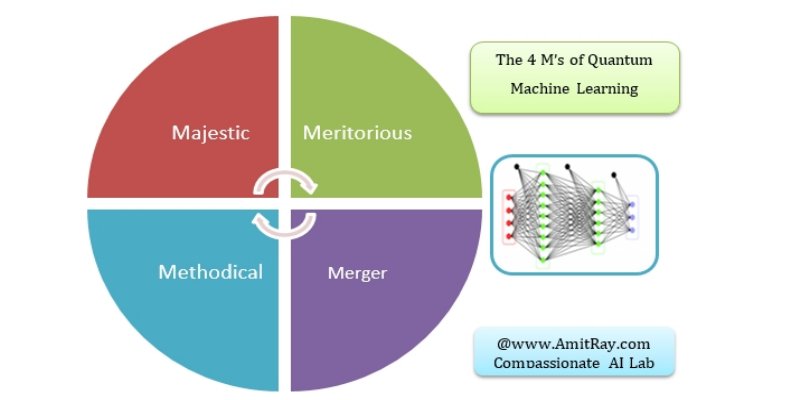
The 4M’s of Quantum Machine Learning
4. Methodical
Over the past few decades quantum computing researchers have developed a handful of techniques like: Quantum walks, Quantum phase estimation, Quantum Fourier transform, and Amplitude amplification that exploit the characteristics of quantum computers. QML should use these technologies in a methodical way. This includes the ability to explain the alternative paths and algorithms of its decision making process in human understanding form. It should also give the alternative plan analysis, creativity, brain storming and human like lateral thinking outputs in a systematic way.
5. Minimum-Maximum: Global Optimization
In a simplistic way a machine learning is a multivariate optimization problem. A non-convex optimization solution gives immense modeling power to the algorithm. A non-convex optimization is at least NP-hard. A convex optimization problem is a problem where all of the constraints are convex functions, and the objective is a convex function if minimizing, or a concave function if maximizing. A non-convex optimization problem has multiple feasible regions and multiple locally optimal points within each region. It can take exponential time in the number of variables and constraints to determine that a non-convex problem is infeasible, that the objective function is unbounded, or that an optimal solution is the “global optimum” across all feasible regions. Quantum annealers aim at solving nonconvex optimization problems by exploiting cooperative tunneling effects to escape local minima.
6. Mediation
Mediation refers to the ability to move a modules in its intended direction. This is to act between various classical and quantum modules with a view to reconciling differences. Quantum circuits are a special class of tensor networks. Complex neural networks can be implemented with tensor networks. The tensor networks of quantum circuit model is widely used for building quantum neural networks to describe quantum algorithms and their experimental implementations. Mediation refers to the ability to reconciling the differences of different algorithms.
7. Metaphor
It refers to the ability of creative intelligence. Metaphors are part of creative intelligence A direct comparison between two indirectly linked, or unrelated, things is called a metaphor. Metaphor is the symbolic of something else. It compares an existing problem with another, unrelated or dissimilar problem, object or situation. Aristotle recognized the value of metaphors in creative intelligence. He wrote ““The greatest thing by far is to be a master of metaphor.”
8. Manifestation
It refers to the ability to self-adjustment of design and the hyperparameters of the machine learning algorithms. Hyperparameters in classical deep learning refer to the model parameters, such as learning rate, number of hidden layers, number of hidden nodes in each layer, kernel size, number of epochs. Currently the best deep learning models are discovered by creating, training, testing, and tuning many models on some well-known reference dataset and reporting the best model in the literature. It is difficult to know how to tune networks for optimal performance.
9. Maturity
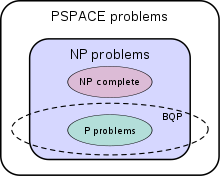 It refers to higher accuracy and higher confidence level. Majority of the algorithms for quantum computing belong to the ‘bounded-error quantum polynomial time’ (BQP) complexity class. Behavior of the system outside BQP should be graceful. Success should not be based on incidental individual achievements. Success should be based on repeatable and proven successful work flow. There should be a well defined maturity plan in the process flow.
It refers to higher accuracy and higher confidence level. Majority of the algorithms for quantum computing belong to the ‘bounded-error quantum polynomial time’ (BQP) complexity class. Behavior of the system outside BQP should be graceful. Success should not be based on incidental individual achievements. Success should be based on repeatable and proven successful work flow. There should be a well defined maturity plan in the process flow.
10. Mitigation
Mitigation means reducing risk of loss from the occurrence of any undesirable event. This is an important element for any quantum machine learning project to avoid unnecessary losses and to improve human safety. The primary objective of the exercise is to mitigate the risk ingrained with the decision making.
Conclusion:
The technologies for quantum machine learning are evolving rapidly and current progress is really impressive. In line with the 10V’s of big data, here we have identified the ten properties of future quantum machine learning. The 10 M’s of quantum machine learning are: Majestic, Meritorious, Merger, Methodical, Minimum-Maximum: Global Optimization,Mediation, Metaphor, Manifestation, Maturity and Mitigation. These 10 properties of QML can be argued, debated and fine tuned to fit the requirements. The three groups of quantum artificial intelligence are: shallow quantum intelligence, deep quantum intelligence, and quantum creative intelligence are identified.
In the book Quantum Computing Algorithms for Artificial Intelligence, I discussed the ten properties of QML in a more logical and cohesive way. But here, I modified the last six properties to incorporate more creativity and more abstract intelligence in QML. Our prototypes and proof-of-principle experiments suggests a first step toward the long-term goal of developing future generations of quantum artificial intelligence that will be able to address questions that cannot be answered in traditional way. However, significant work remains, and many open questions and obstacles need to be tackled to achieve the goal of building large-scale quantum machine learning applications.
- Compassionate Artificial Intelligence: Frameworks and Algorithms by Dr. Amit Ray
- Compassionate Superintelligence, AI 5.0 by Dr. Amit Ray
- Quantum Computing Algorithms for Artificial Intelligence By Dr. Amit Ray
